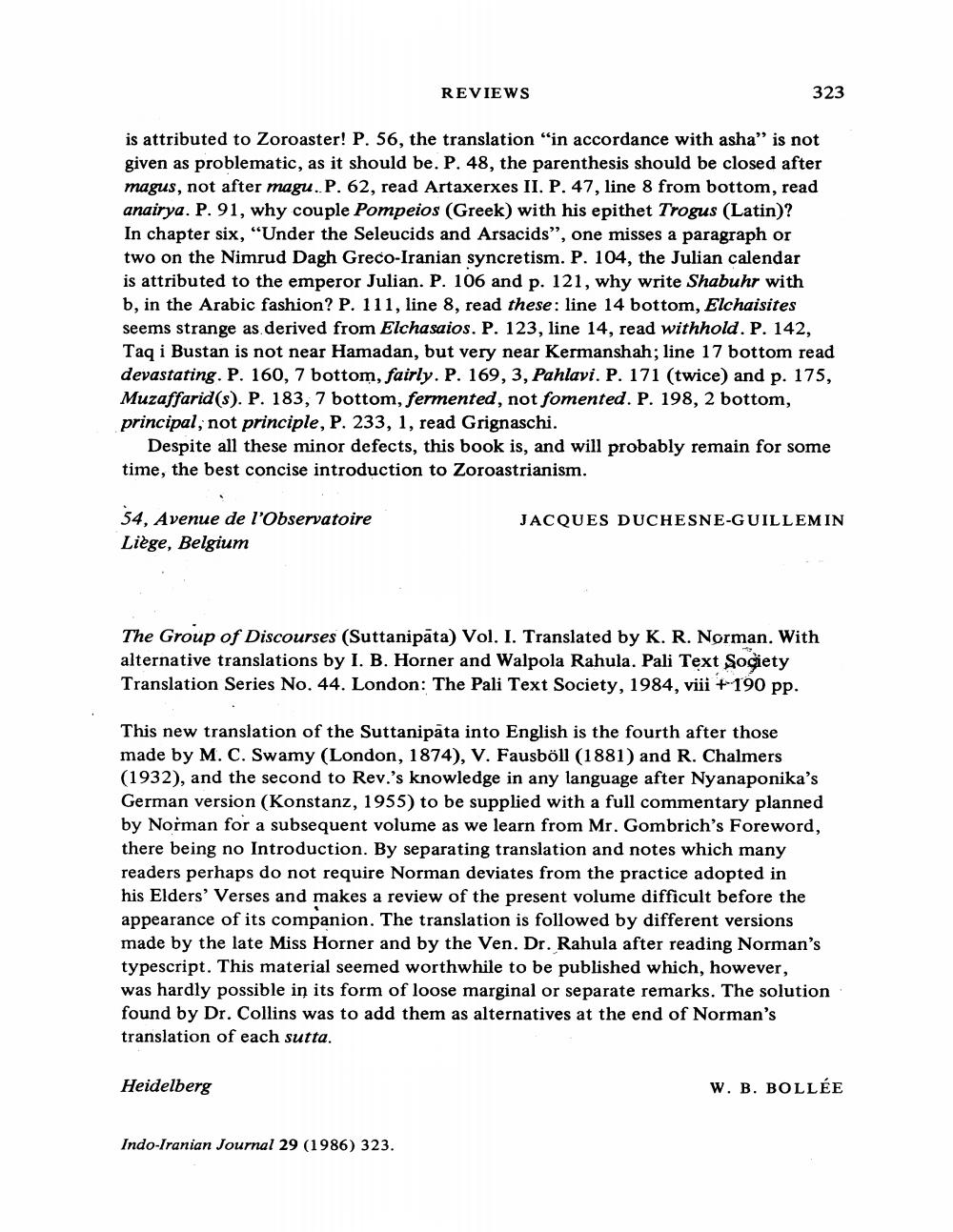________________
54, Avenue de l'Observatoire Liège, Belgium
is attributed to Zoroaster! P. 56, the translation "in accordance with asha" is not given as problematic, as it should be. P. 48, the parenthesis should be closed after magus, not after magu. P. 62, read Artaxerxes II. P. 47, line 8 from bottom, read anairya. P. 91, why couple Pompeios (Greek) with his epithet Trogus (Latin)? In chapter six, "Under the Seleucids and Arsacids", one misses a paragraph or two on the Nimrud Dagh Greco-Iranian syncretism. P. 104, the Julian calendar is attributed to the emperor Julian. P. 106 and p. 121, why write Shabuhr with b, in the Arabic fashion? P. 111, line 8, read these: line 14 bottom, Elchaisites seems strange as derived from Elchasaios. P. 123, line 14, read withhold. P. 142, Taq i Bustan is not near Hamadan, but very near Kermanshah; line 17 bottom read devastating. P. 160, 7 bottom, fairly. P. 169, 3, Pahlavi. P. 171 (twice) and p. 175, Muzaffarid(s). P. 183, 7 bottom, fermented, not fomented. P. 198, 2 bottom, principal, not principle, P. 233, 1, read Grignaschi.
Despite all these minor defects, this book is, and will probably remain for some time, the best concise introduction to Zoroastrianism.
REVIEWS
323
Heidelberg
The Group of Discourses (Suttanipata) Vol. I. Translated by K. R. Norman. With alternative translations by I. B. Horner and Walpola Rahula. Pali Text Society Translation Series No. 44. London: The Pali Text Society, 1984, viii +190 pp.
Indo-Iranian Journal 29 (1986) 323.
JACQUES DUCHESNE-GUILLEMIN
This new translation of the Suttanipata into English is the fourth after those made by M. C. Swamy (London, 1874), V. Fausböll (1881) and R. Chalmers (1932), and the second to Rev.'s knowledge in any language after Nyanaponika's German version (Konstanz, 1955) to be supplied with a full commentary planned by Norman for a subsequent volume as we learn from Mr. Gombrich's Foreword, there being no Introduction. By separating translation and notes which many readers perhaps do not require Norman deviates from the practice adopted in his Elders' Verses and makes a review of the present volume difficult before the appearance of its companion. The translation is followed by different versions made by the late Miss Horner and by the Ven. Dr. Rahula after reading Norman's typescript. This material seemed worthwhile to be published which, however, was hardly possible in its form of loose marginal or separate remarks. The solution found by Dr. Collins was to add them as alternatives at the end of Norman's translation of each sutta.
W. B. BOLLÉE




